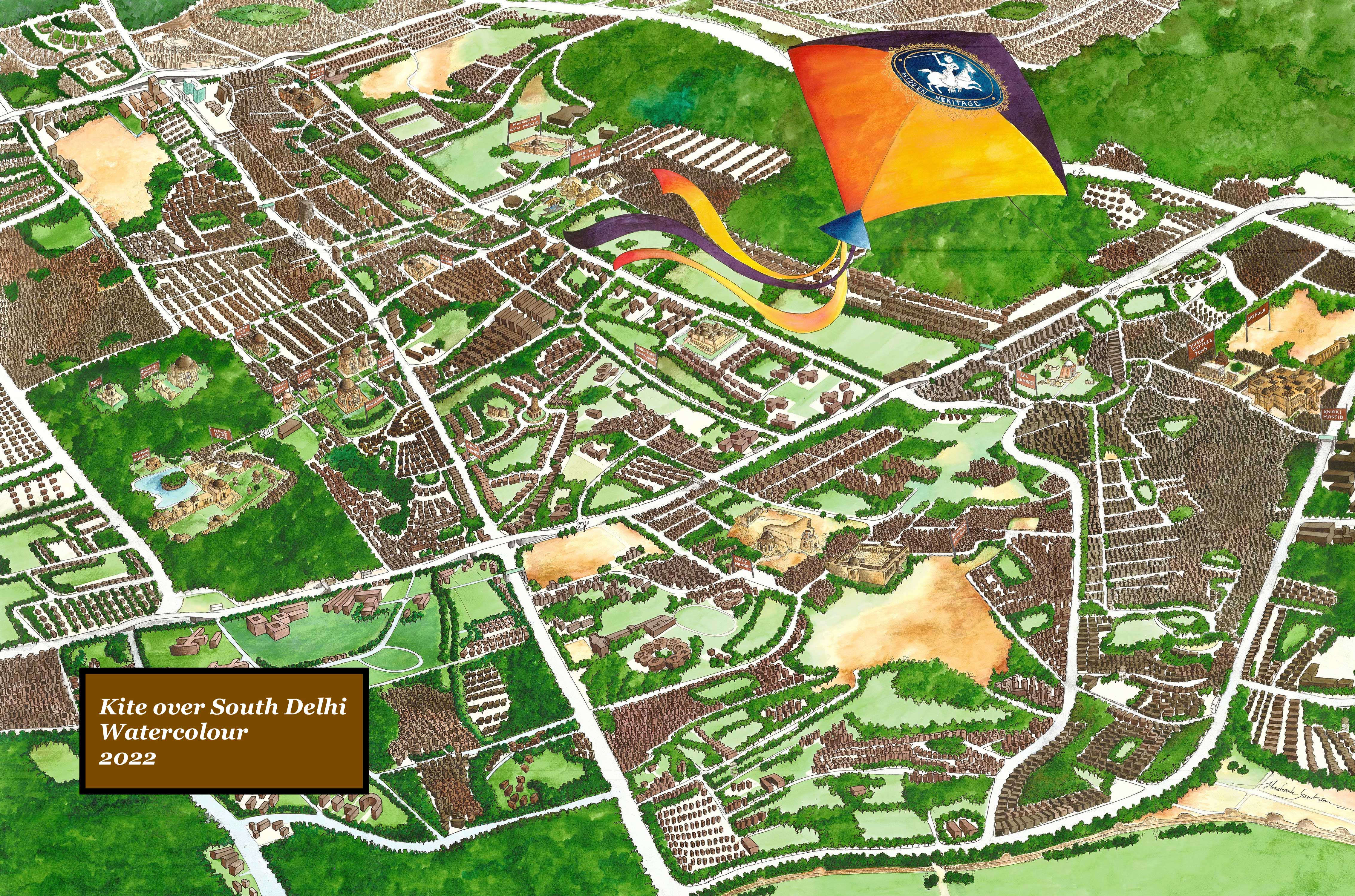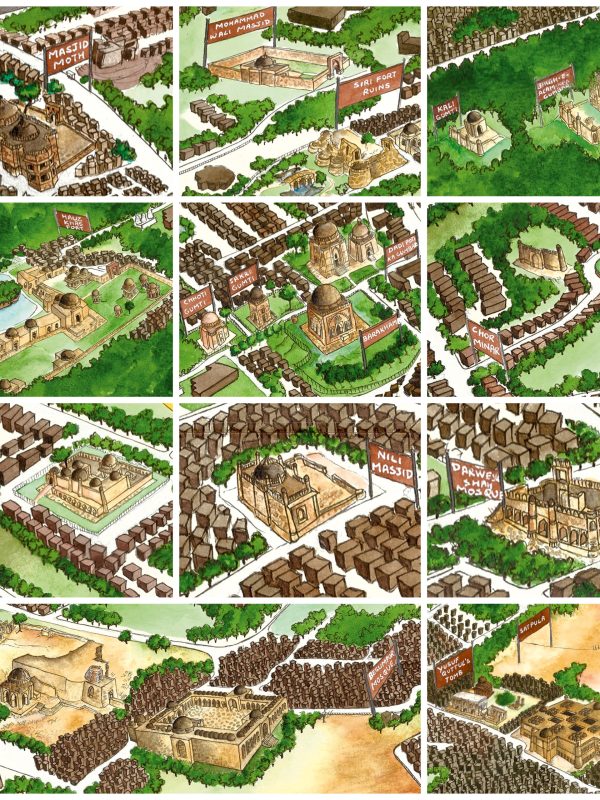
HIDDEN HERITAGE - KITE OVER DELHI
South Delhi’s residential and commercial areas are dotted with remains of Delhi’s Sultanate period (1192-1526) and to a lesser extent, that of the Mughal period (1526-1857). Hidden Heritage Art seeks to visually chronicle these with ‘Kite over South Delhi’. This has been created by the wonderfully talented Shashank Gautam, who has honed his skills at the National Institute of Fashion Technology (NIFT), working with Hidden Heritage founder Arjun Kumar.
For queries:
Email: indiahiddenheritage@gmail.com
TW: @HiddenHeritage
To know more about Hidden Heritage Art, click here
SCROLL DOWN TO KNOW MORE ABOUT THE MONUMENTS FEATURED IN THE PAINTING


Among South Delhi’s best kept heritage secrets in this elegant three-bay mosque within a walled compound. It is attributed to the Lodi dynasty, around the beginning of the 16th century CE – a time when mosque building traditions and design hit an acme towards the last part of the Sultanate period. Nearby run the mighty fort walls of Khilji’s Siri.
The large complex we see today is the result of building activity through the 14th century, with the Hauz-e-Alai believed to have been built by Alauddin Khilji (reign 1296-1316), the madrasa complex by Firoz Tughlak (reign 1351-88), whose tomb is also here along with the tombs of several others who were teachers at the madrasa.


